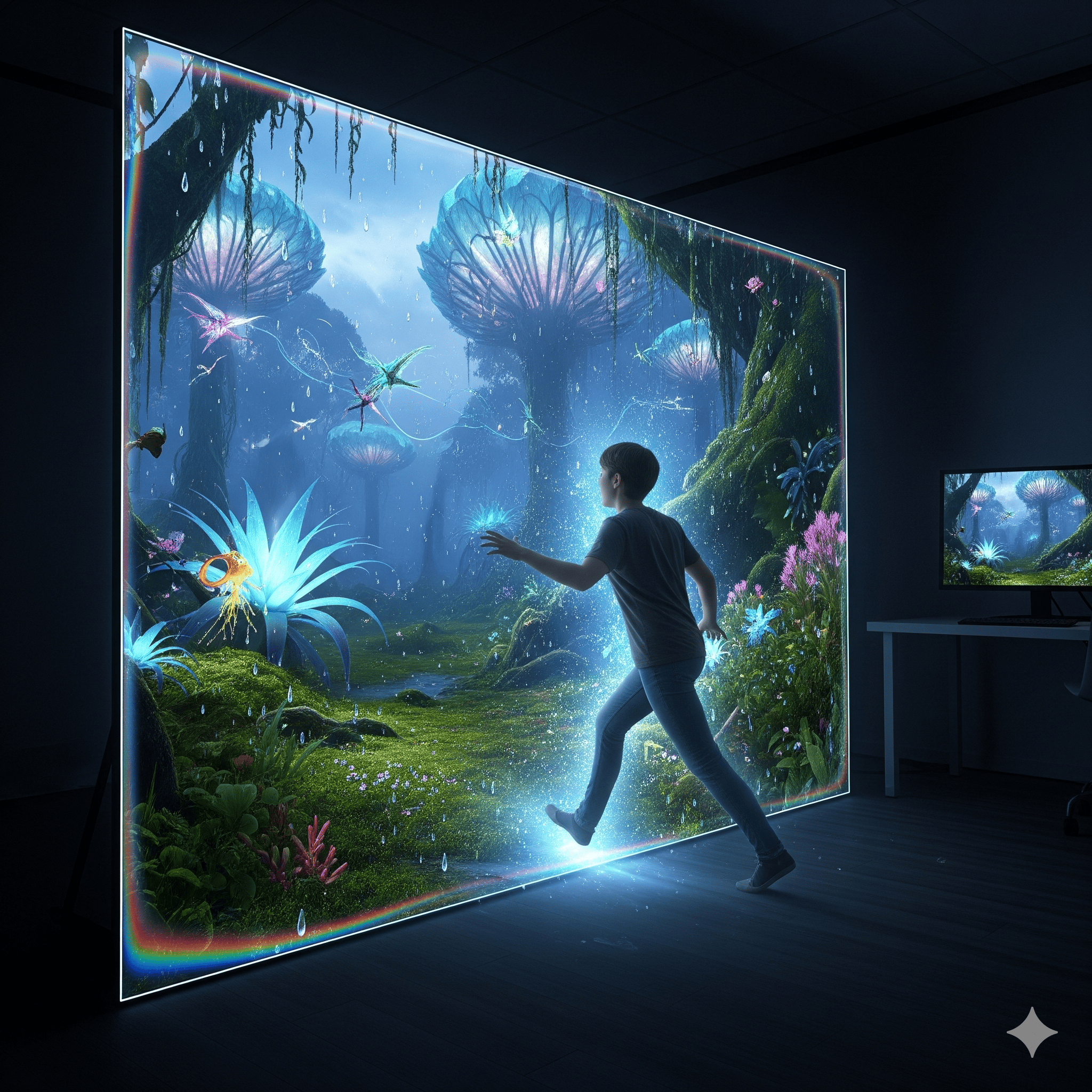
From Screen to Reality: The Technology That Lets You Step Inside a Video
In an era of accelerating advancements in artificial intelligence and image processing, the Chinese company 4DV AI is making a significant impact with a groundbreaking technology poised to revolutionize the world of visual content.
This innovative technique, called 4D Gaussian Splatting, promises to redefine dynamic scenes by transforming any ordinary 2D video into an immersive 4D experience. This allows viewers to navigate a scene from multiple angles as if they were part of it, opening up new possibilities in entertainment, education, and digital journalism.
The technology leverages the PlayCanvas engine to represent dynamic scenes in 3D, adding a time dimension to create realistic motion effects. In this deep dive, we'll explore this promising technology, its importance, how it works, and how it's breathing new life into scenes with a new dimension.
The New Era of Immersive Visual Content
Visual content has undergone radical transformations over the past decades, from still images to the 2D video that has become an integral part of our daily lives. However, these traditional formats impose limitations on viewer interaction, as the perspective remains fixed and not freely explorable. This constraint limits the audience's ability to fully immerse themselves in the scene, making the experience passive.
With rapid developments, there's a growing need for more immersive and interactive experiences that go beyond passive viewing, allowing users to become part of the content itself. In this context, 4D Gaussian Splatting emerges as a qualitative leap, promising to redefine the visual content experience by transforming dynamic scenes into immersive worlds that can be explored and controlled.
What is 4D Gaussian Splatting?
To understand 4D Gaussian Splatting, we must first grasp 3D Gaussian Splatting. This technique is used to represent 3D scenes, but models aren't built from traditional geometric shapes like triangles. Instead, they are created from millions of "Gaussian blobs"—essentially small, semi-transparent, and ellipsoid-shaped data points that hold information about their position, color, and opacity.
These points are combined and rendered to create an incredibly realistic representation of a scene, significantly improving the visualization quality in 3D models and producing more complete and detailed point clouds. The technique discards traditional polygonal meshes, with each point possessing specific properties that determine its location, color, transparency, size, shape, and orientation. By combining millions of these points, you get a highly detailed image of a 3D object that also shows how it looks from any specific angle, thanks to all this extra data.
This technique, which mimics how a camera works, merges the colors of points in the line of sight to create the final image. 3D Gaussian Splatting has revolutionized the speed of rendering static scenes, enabling high-quality, real-time rendering and overcoming the limitations of previous technologies.
The real innovation of 4D Gaussian Splatting lies in adding the fourth dimension: time. While 3D Gaussian Splatting allows free movement within a static 3D scene, 4D Gaussian Splatting makes it possible to model and embody dynamic scenes that change and evolve over time. This means that captured scenes are no longer just static images in space; they become living entities that move and interact, and users can navigate freely not only in space but also through time.
The ability to control the viewing perspective and rewatch events from different angles at any point in time is the core of what distinguishes the fourth dimension in this context, making time a new interactive element. 4D Gaussian Splatting is an evolution of 3D Gaussian Splatting, which in turn was developed to address the shortcomings of previous techniques like Neural Radiance Fields (NeRFs). While NeRFs offered high-quality 3D scene reconstruction, they suffered from slow rendering due to their reliance on complex volumetric rendering. 4D Gaussian Splatting focuses on modeling complex motion and real-time rendering, making it more suitable for dynamic content than NeRFs, which are better for reconstructing static scenes.
From Pixels to Dynamic Reality
4D Gaussian Splatting takes the concept to a new level by adding the fourth dimension of time. This technology analyzes the input 2D video, with its algorithm decoding the video frame by frame to extract depth and motion data. Millions of "Gaussian blobs" are then generated based on the collected data, with each point representing a part of the scene and including data on its color, shape, position, and how these data points change over time.
The technology reconstructs the scene into a 4D scene, where the time element is added to create natural motion effects. Advanced neural networks are used to estimate the depth map and the movement of objects within the scene, linking the temporal and spatial data of the points. This allows for the prediction and generation of new frames from different angles and at different times. The PlayCanvas engine, known for its browser-based graphics support without the need for plugins, is used to render the final scene smoothly and adaptively across various devices.
Another key aspect is the use of spatial audio. As the viewer navigates the video environment, the audio responds to the new camera position, adding a realistic sound dimension that enhances user immersion.
From 2D to 4D Video
This technology allows users to navigate within a scene and change the viewing angle in real time, with ambient sounds adjusting to their new virtual location. Its importance lies in its ability to reimagine traditional and dynamic video content, enabling content creators to go beyond the limits of 2D filming and unlock new horizons for visual storytelling.
In the film industry, for example, directors can re-stage shots after filming is complete and allow viewers to explore a scene from any angle they choose. In sports, this technology lets analysts and fans re-watch crucial moments from any perspective for a clearer view of the action. It can also transform news reports into interactive experiences that allow viewers to see events from multiple angles.
With this technology, complex scenes can be simulated for interactive training and the analysis of complex object movements from multiple angles. It's now possible to create realistic, dynamic gaming environments from real footage without the need for specialized 360-degree cameras. Additionally, it enables the creation of immersive virtual tours of tourist sites or real estate from video footage.
In conclusion, 4D Gaussian Splatting represents a leap forward in digital video processing, offering immersive visual experiences that were previously impossible. Thanks to its reliance on the PlayCanvas engine, this technology is widely accessible without the need for specialized hardware. As these technologies continue to evolve, 4D scenes may become a fundamental part of how we consume digital content, whether in media, entertainment, or professional fields, completely redefining the concept of interactive viewing.


